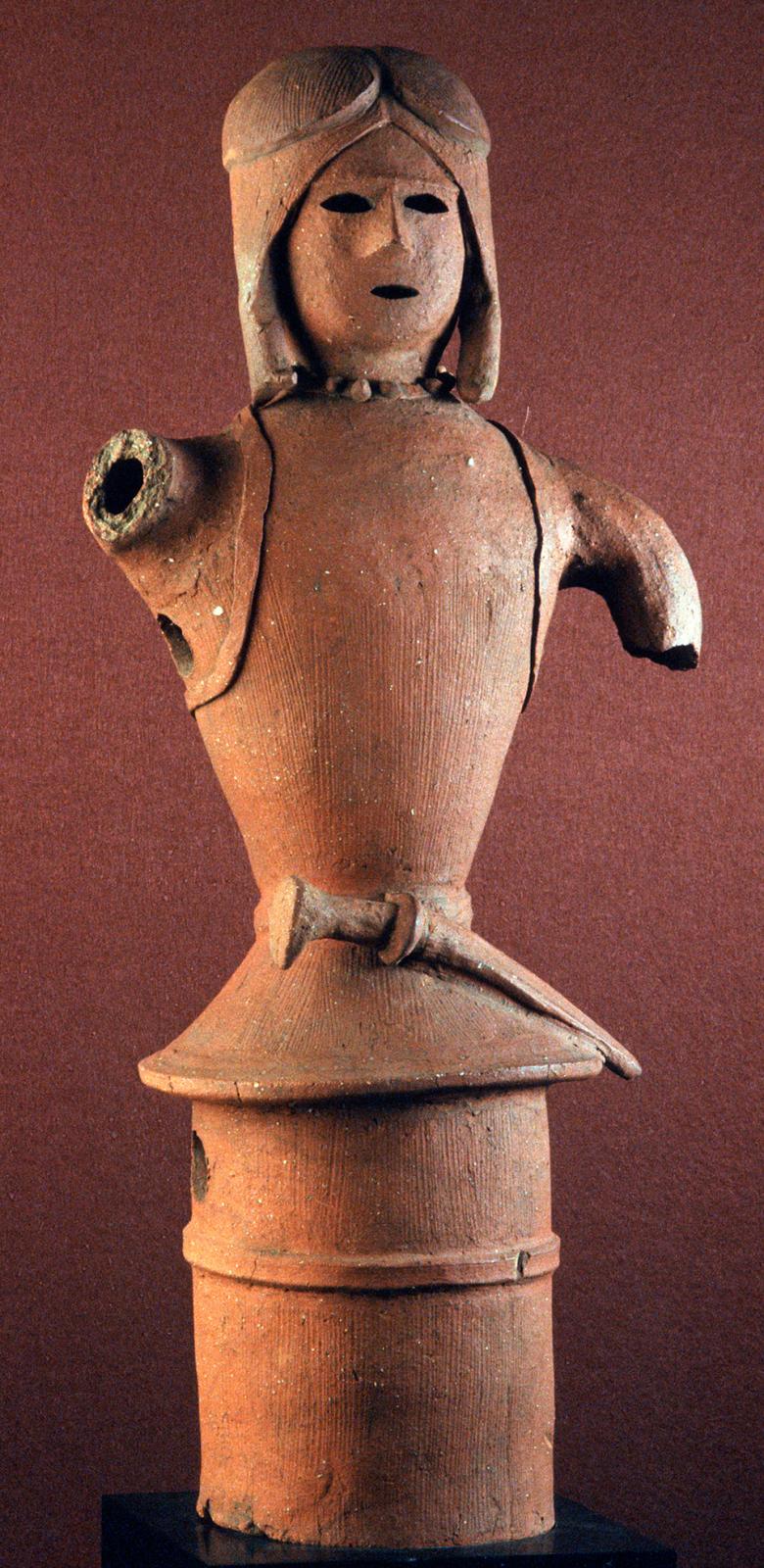Sacred Space and Japanese Art at the Spencer Museum of Art
Entry by Sasha Miller
Haniwa exhibit a direct connection to one of the earliest known forms of Japanese burial practices. Haniwa were placed on top of the famous keyhole-shaped tombs characteristic of the Kofun Period (250–538 CE). Likely created as tomb guardians, haniwa also validated the importance and power of the deceased elite of society buried in the tombs they surrounded, and in addition, they seem to provide a connection between the human and spirit worlds. Often surrounded by a moat, these burial mounds ranged in size with some stretching a half-mile long, depending on the importance and wealth of the deceased buried in the underground tomb.
Over time, haniwa evolved from simple shapes, such as cylinders, to more concrete and advanced forms, such as animals, houses, boats, and people, including soldiers wearing armor and weapons. This particular soldier (perhaps low-ranking given the lack of elaborate armor) appears to have a quiver and a sword strapped to his body. The cylindrical footing, which provided sturdy anchorage to the earth and prevented disruption during erosion, is typical of the terracotta haniwa form.

